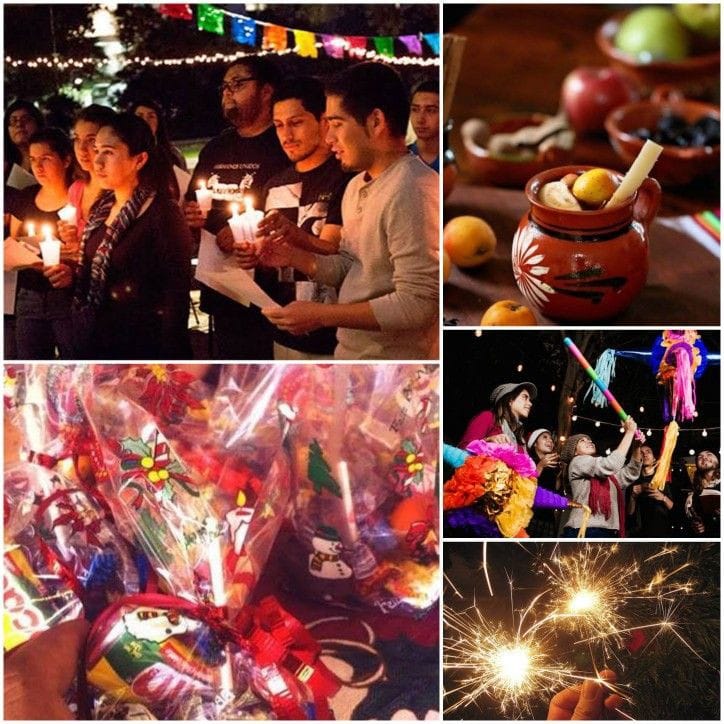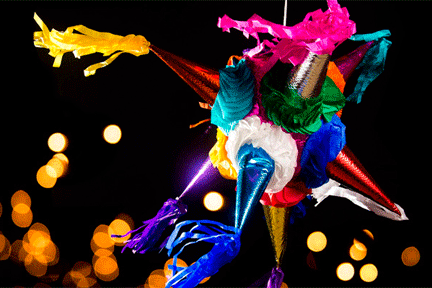The Posada Tradition
News Category: News, Community News, and General Discussion
-
Published December 2, 2023
By Efrain Gonzalez Posada’s Navideñas 2023 San Miguel de Allende Mx
Get ready to celebrate Christmas in beautiful San Miguel de Allende the Heart of Mexico’s Christmas Traditions. All you need to know is here and we welcome you to enjoy and be part of this tradition.
“Posadas Navideñas” —traditional Christmas parties— are held between December 16th and December 24th in cities and pueblos across Mexico
December 16th marks the beginning of the annual Posadas Navideñas in Mexico. Posada is a Spanish word for “inn,” and the Posadas Navideñas, which recall events leading up to the nativity of Jesus, are a focal point of Christmas traditions in Mexico.
Reenacting the search for an inn
A local Posada begins with a ritual that reenacts Mary and Joseph’s search for an inn on their way to Bethlehem.Traditionally, this manifests as a local street procession, and other times the ritual will take place outside of the house (or event center) where the party is to be held; with some guests waiting outside playing the role of the pilgrims asking for accommodation, and other guests inside, playing the role of the hosts.
On street processions, participants carry lighted candles along a prescribed route around a local neighborhood asking, through means of a special posada song, for ‘room at the inn’—knocking on doors along the way, or knocking on the door where the party is arranged. The protagonists of the nativity story are most often portrayed in costume by local children.
Neighbors along the route may open their doors and purposefully refuse Mary and Joseph (in song) until, at the end of the route, a designated house (or sometimes a local church or village hall) allows Mary and Joseph to pass, and a Christmas posada party ensues there.
The posada song is organized into two groups of singers: the pilgrims (asking for room at the inn) and the hosts. The lyrics are sung in turn, with the pilgrims making pleas for accommodation, and the hosts rejecting those pleas—until the end, when the hosts accept to accommodate Mary and Joseph.
If a street procession doesn’t precede a party, the song will most likely be sung at some point during the party itself, with all the guests assigned a ‘role’ as either the pilgrims (asking for room at the inn), or the hosts, and they sing accordingly. Song sheets and candles are handed out to aid the participants’ reenactment.
The party, or posada as it’s referred to, often features villancicos (Christmas carols) and a piñata—a colorful papier-mâché figurine which is strung up on a rope and, when broken-open by party goers hitting at it blindfolded with a stick until it eventually pours out with fruit and confections which the children scurry to collect.
There is usually at least one street posada taking place in a neighborhood of every pueblo on every night between the 16th and 24th of December, and some people also host private posadas for friends and family to attend.
Some host posadas every year as part of their annual Christmas festivities, and if you’re visiting or living in San Miguel de Allende, there might be more than one to attend; and one for you to host if you choose to open your home and invite others to a posada.
What to expect at a Christmas posada?
Ponche (punch) is a hot drink made from fruits, such as tejocotes, guavas, sugar cane, hibiscus flower, apple, tamarind and cinnamon.This drink is present during the months of December and January, which is when we can find all the ingredients available.
Depending on the uses and customs of each region, the punch can be combined with some distillate, adding alcohol for adult consumption.
Tamales are one of the most iconic dishes at posadas. They are made with corn dough filled with meat, chili peppers, cheese, beans, wrapped in corn or banana leaves and steamed.
Although they are a time-consuming preparation, it is one of the most popular foods due to its practicality when offering it to attendees. They are very filling and can be filled with practically any stew.
Atole (warm cornmeal drink) Atole is a hot, thick drink made from corn dough, water, milk, cinnamon and sweetened with sugar or piloncillo. It is often served alongside tamales.
It is a traditional element of Mexican cuisine, it is customary to drink it in cold weather and it can be made with different spices or fruits.
Buñuelos (fritters) are fried desserts served sprinkled with sugar and cinnamon. They can have different shapes and sizes, they are crispy on the outside and soft on the inside.
In Mexico, 2 types of buñuelos predominate: wind buñuelos and knee buñuelos.
Knee fritters are more popular during the holidays and are accompanied by a syrup made with piloncillo, cinnamon and guavas.
Guisos y antojitos (Stews and snacks)
Depending on the region, it is common to find stews such as pozole, tacos, quesadillas, tostadas and other traditional dishes.
Tostadas are one of the most popular options. Among the traditional stews we find beef or chicken tinga, salpicón, pata and picadillo.
Frutas (Fruits) Fresh fruits are served such as apples, tangerines, sugar canes, tejocotes and even jicamas. These fruits are placed inside the piñatas or bonuses.
Dulces y piñatas (Sweets and piñatas)
In addition to the main dishes, posadas often include a variety of traditional sweets, such as tejocotes in syrup, pumpkin candy, sweet potatoes, and piñatas filled with goodies.
Aguinaldos (bonuses) Sweet bonuses are part of the Mexican tradition, today they can be filled with various sweets, although the most common thing is to see elements such as: animal crackers, peanuts, snacks and fresh fruits.
These are just a few examples of the food and drinks enjoyed at the Posada’s.. Traditions and dishes may vary by region, but in general, posadas are an opportunity to share food, drink, and celebrate the holiday season with friends and family, the town is united and there is a sense of Joy and cheer amongst the community.
Enjoy the posada’s and all the country offers during this important holiday festive period.



Leave a Reply